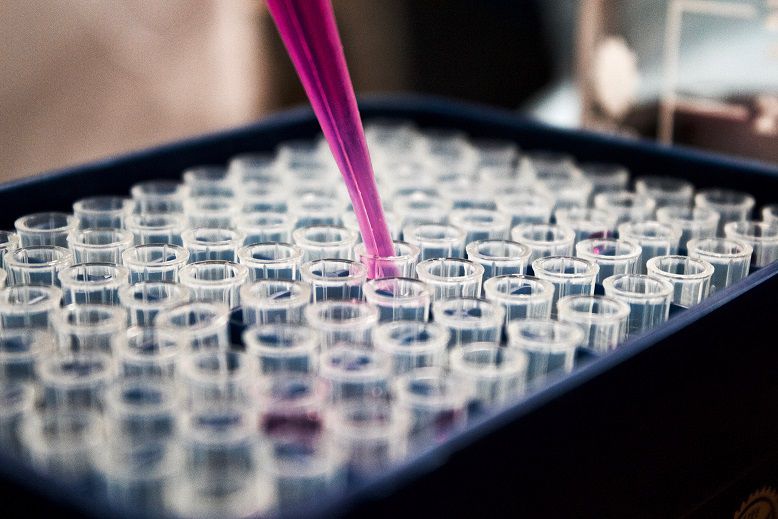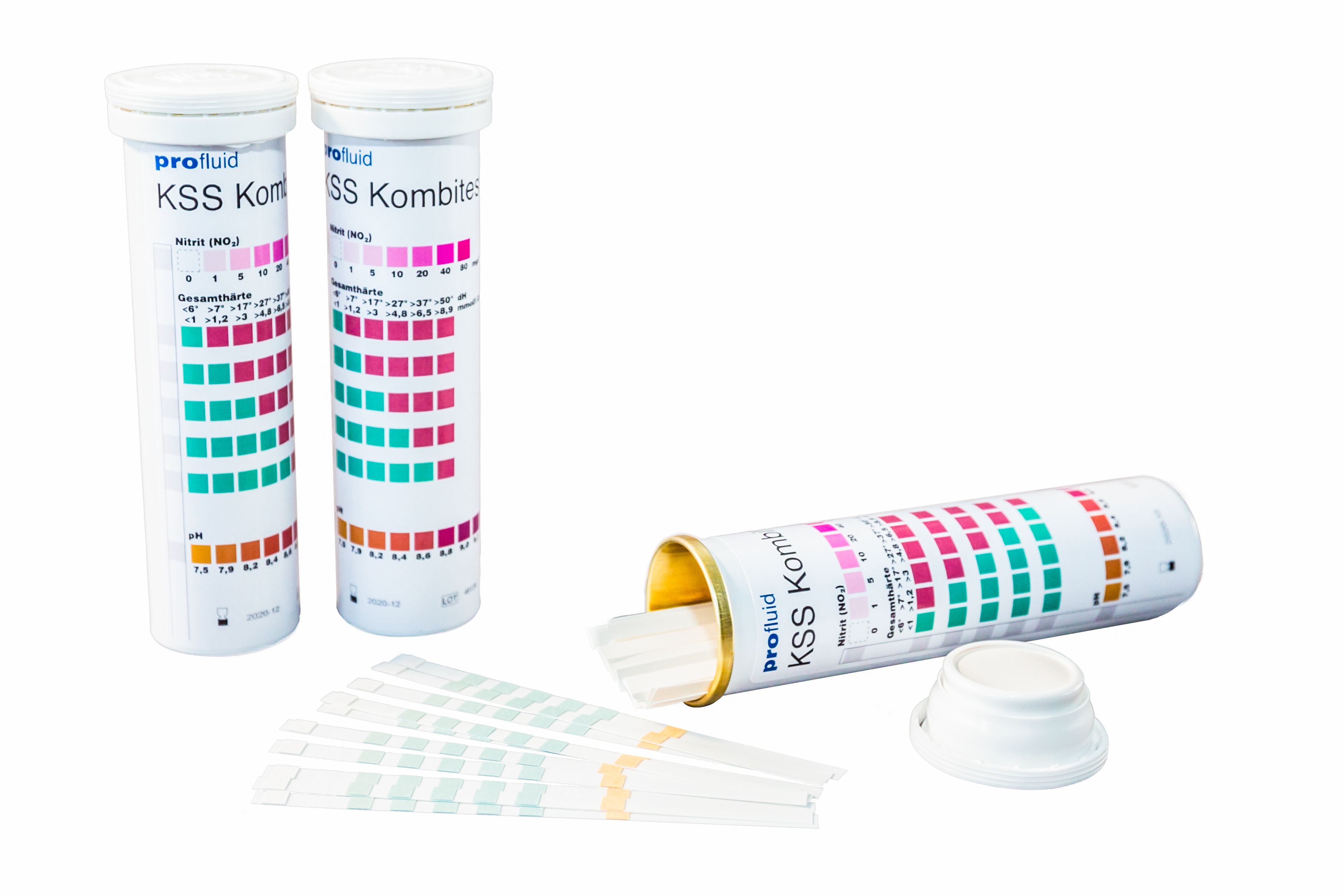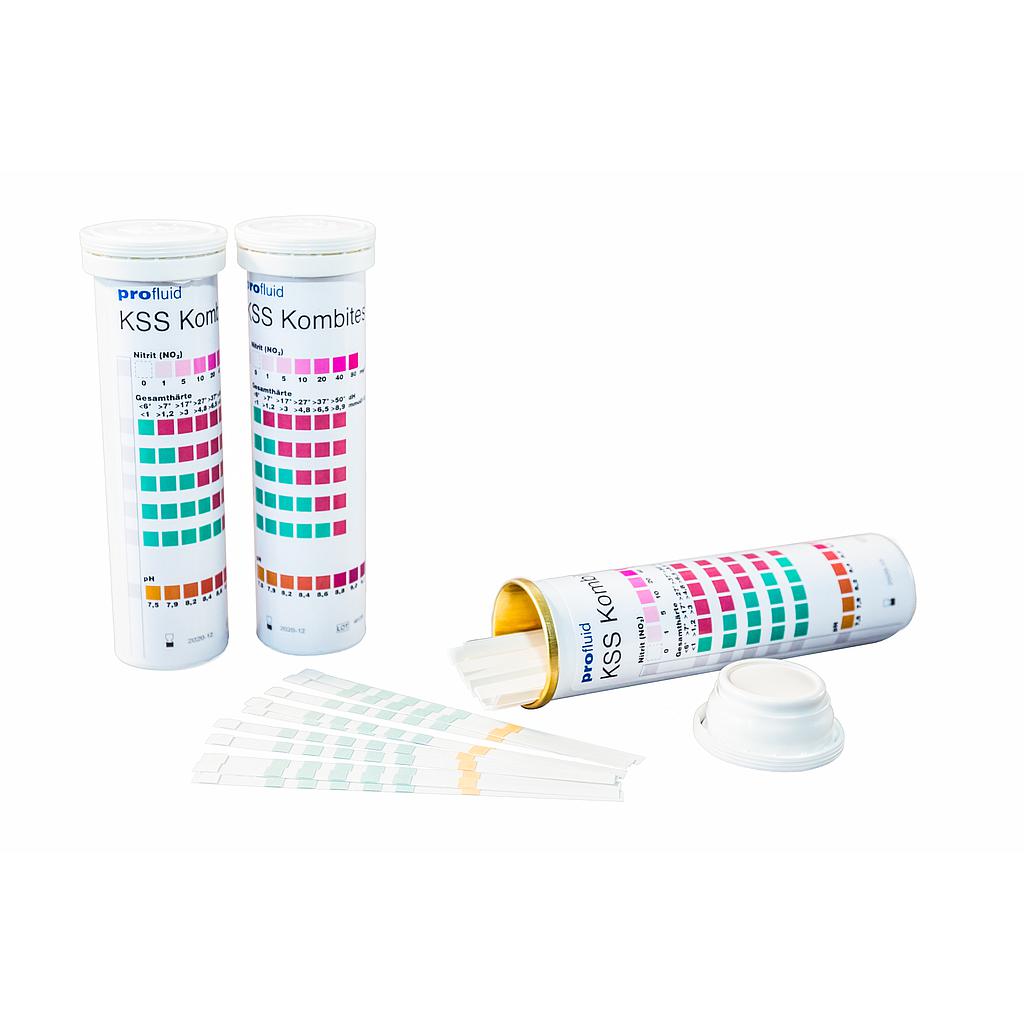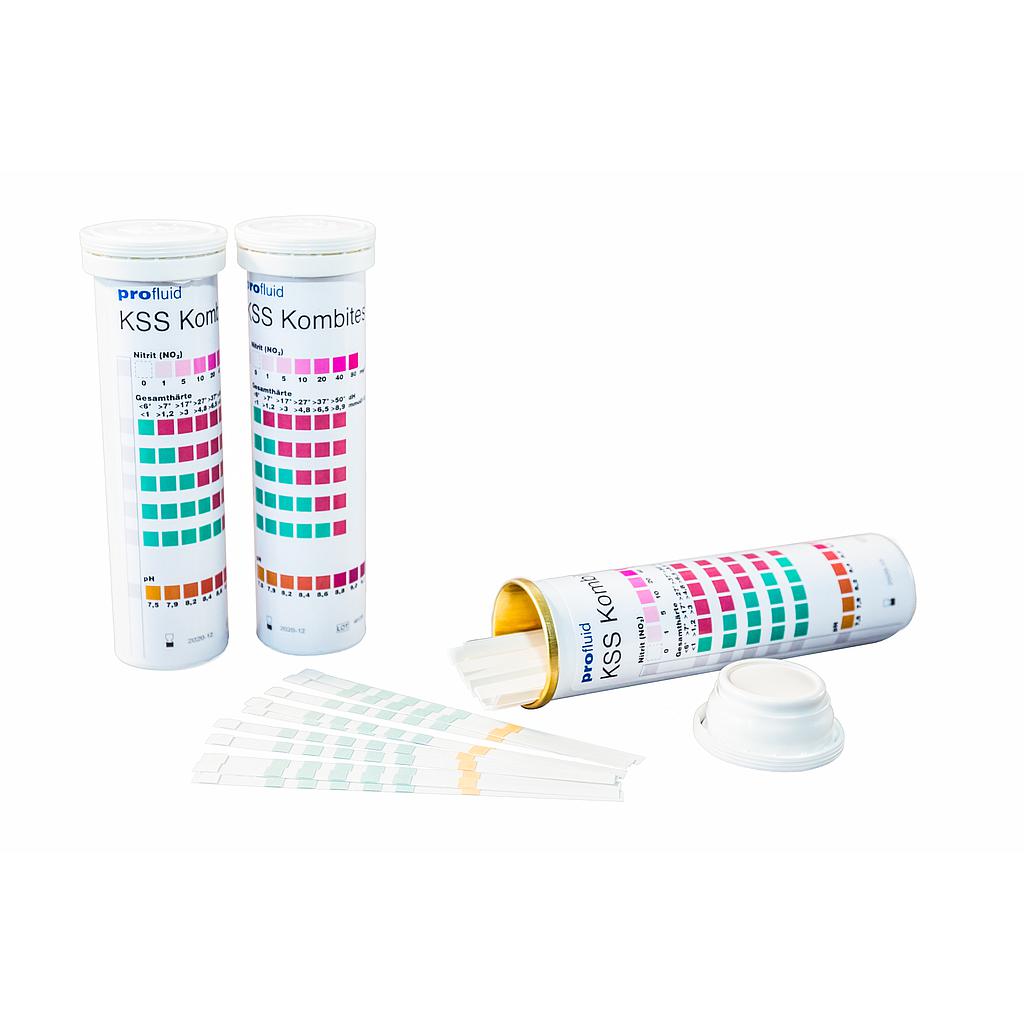profluid KSS Kombitest
1 pack contains 3 doses with 100 test strips each
Country of origin Germany
Customs tariff no. : 3822 9000
For discount see price list
In the profluid store simply buy online - for larger orders or scale discounts please contact us for an individual offer.
The offer is exclusively for professionals.
The new version now with extended pH range up to pH 10

High nitrite content
High nitrite content in cooling lubricants can lead to health risks in combination with other ingredients. Weekly monitoring is appropriate.
Nitrite (NO2) Nitrite concentrations of ≥20 mg/l in water-mixed KSS should be avoided according to TRGS611 to prevent the formation of carcinogenic nitrosamine. For concentrations >20mg/l contact your cooling lubricant supplier. Some coolant lubricants are inhibited against nitrosamine formation up to a nitrite level of ~80mg/l. Sources of nitrite (incomplete): bacterial degradation of nitrate in the preparation water, carryover from hardening baths, general microbial activity, diesel exhaust fumes ........

Water hardness
Water hardness (dH° - mMol/l Ca2+) Soft foam is produced by surfactants with low water hardness (Ca2+ <1mMol/l). High calcium content (Ca2+ >5mMol/l) causes lime soap formation, corrosion and promotes germ growth.
The foam at high water hardness is often comparatively "hard". It can also lead to emulsion splitting. We also recommend a weekly check. To reduce the build-up of water hardness we recommend the use of water with ~ 1mMol/l Ca2+.

Ph Fluctuation
KSS should only be used in the pH ranges recommended by the manufacturer. Excessive pH values increase the risk of skin irritation. Lowered pH values despite "sufficient" concentration (refractometer) are an indication of reduced stability, risk of corrosion and microbial degradation. The last point can lead to odour development. Deviations should therefore be corrected by conservation measures or, if necessary, by replacement of the cooling lubricant. The weekly check is usually sufficient. Occasionally the inherent colouring of the coolant can make it difficult to read the pH value. If in doubt, check with a calibrated pH meter. Lowering of 0.2 to 0.3 units is "normal" in use, more should be corrected."normal”, mehr sollte korrigiert werden.




